Explore the planet. Do not take vacations; instead, travel. What you get to like most can come from where you least expect it. — Here I share a pictorial sample of the many facets of Jamaica. While visiting the island, I found myself surprised by the contrasts of its amazing nation, although all nations and cultures are supposed to be contrasting in their traditions. That is the nature and, sometimes, the beauty of the human experience. — GPC

In our latest visit to Jamaica, we covered 1,564 miles driving along and across the island (and on the left side of the road!). Not a lot in comparison to other trips, but the Jamaican roads were narrow (except for the toll highways, which were modern and impressive), rich in towns and places to stop. We tried to not miss anything. There were many details to appreciate, a single visit was not enough to explore all we wanted.
We thank the Jamaican people for being kind and friendly, generous and proud of their nation. They taught us much about culture, universities, traditions, values, food (the Jamaican Jerk is excellent), ambitions, socio-economic frustrations and hopes for the future. We wish them well and anticipate to see –some day– Jamaica as a Republic, and no longer a “constitutional monarchy,” a fraction of the British Crown. The maps below summarize our driving routes (yellow dashed lines) back and forth, every day. The rainforests across the Blue Mountains (East side of the island) were spectacular.
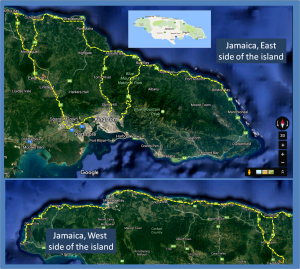
Above: The island of Jamaica (4,240 square miles) is the third largest in the Caribbean, after Cuba and Hispaniola (Haiti and Dominican Republic).
In this post, I share a small sample of the 1,000+ images taken while traveling in Jamaica (in no strict chronological order, but reflecting related events that took place while exploring the island). The images alone tell the story, I provide little text. At times, I found myself surprised by the contrasts in the Jamaican nation, although all nations and cultures are supposed to be contrasting in their traditions. That is the nature and, sometimes, the beauty of the human experience. I must say, however, that the wealth divide was acute, and as epidemic and unfair as among other Caribbean or South American countries. It could be felt everywhere.
Examine the photo ride, be patient, open your mind to the message, and find depth in the details. At the end, I summarize my impressions in a concluding remark.

Above: Arriving in Jamaica. Northwest part of the Island. We landed at Sangster Montego Bay International Airport (MBJ). There are several international airports in Jamaica and numerous small landing runways (see airports in Jamaica).

Above: Ocho Rios, in the North-central part of Jamaica. An active, commercial town. Tourism is an important component of the local economy (see Jamaican Economy).
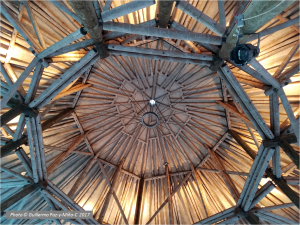
Above: A close up of the central stage (structure built on bamboo and logs) at Ocho Rios’ Island Village. Spot the rock pigeon, there is one to be found.

Above: African ancestry mixed with Spanish and… later… English heritage, Ocho Rios.

Above: The Jamaican colors are everywhere, Ocho Rios.

Above: Jamaican newspapers. The Gleaner.

Above: Letter of the Day, Jamaican newspapers, The Gleaner.

Above: Driving on the left-side of the road, right-side of the car… can be confusing. The brain, however, adapts to it surprisingly fast. The local advice is “stick to the left, drive slowly.”

Above: Warnings to drivers… Ocho Rios (but common in urban, suburban and rural areas across Jamaica).

Above: A country-wide road campaign. This is from the West part of the island, on our way to Negril.

Above: At the Bob Marley Museum in Kingston. Quite nice guided visit (80 minutes).

Above: It was the right decision! The Bob Marley Museum is “the” most visited place in Jamaica.
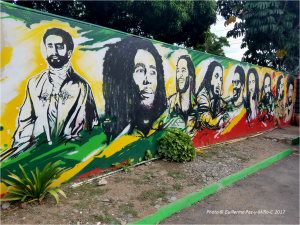
Above: Bob Marley’s progeny. Mural at the Bob Marley Museum, Kingston.

Above: Mural on the inside wall around the Bob Marley Museum. Learn some history about it.
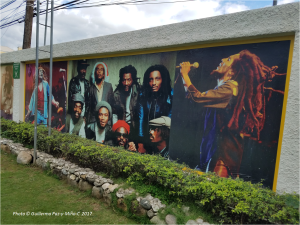
Above: Mural on the inside wall around the Bob Marley Museum. Learn some history about it.
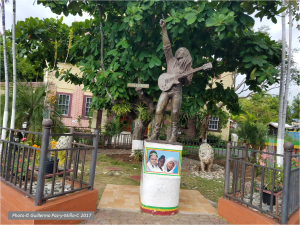
Above: Main entrance to the Bob Marley Museum. Learn about the museum’s history.

Above: The beautiful, sensual and rebellious “Redemption Song” by Laura Facey, at the Emancipation Park, Kingston. – The statue design was selected among sixteen proposals in a national competition. – We liked this sculpture so much. Artists who do not shock do not live fully. With this sculpture, Facey did both.

Above: Bauhinia at the impressive Castleton Botanic Gardens, central part of the island, a bit to the East. The tropical and subtropical rainforests in the area are spectacular.

Above: An old bench turned into another element of the forest. Mosses, ants, anoles and birds come to it, but rarely people, Castleton Botanic Gardens.

Above: Gazebo at the Castleton Botanic Gardens. It was so quiet that B&W became ideal.

Above: Bamboo, gentle shade, Castleton Botanic Gardens.

Above: Stop near Orange Bay and Buff Bay, Northeast part of Jamaica. Although hesitant at first, choosing a small car was quite practical (the rural roads can be very narrow).

Above: Fishes carved on wood… on our way to Port Antonio.

Above: Port Antonio, relics of a romantic place, Northeast of Jamaica (image 1 of 3).

Above: Port Antonio, relics of a romantic place, Northeast of Jamaica (image 2 of 3).

Above: Overview of Port Antonio, Northeast part of Jamaica (image 3 of 3).

Above: Our 2016 book, Measuring the Evolution Controversy, contemplating Pellew Island Bay, East of Jamaica.
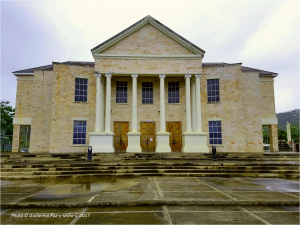
Above: Resident Magistrate’s Court or Portland Parish Court in Port Antonio.
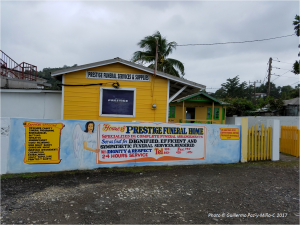
Above: Prestige Funeral Home in Port Antonio.

Above: Above: Prestige Funeral Home, it reads “Sending Your Loved Ones Home in Elegant Style.” It provides “Burial clothing for both male and female…” and other services, Port Antonio.
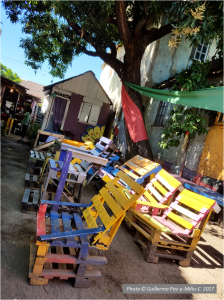
Above: At Life Yard community initiative in Kingston.
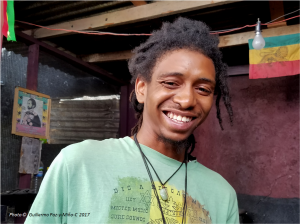
Above: Our friendly host, Sabukie Allen, at Life Yard community initiative in Kingston. Thanks so much for introducing us to the project and for showing us the street murals.
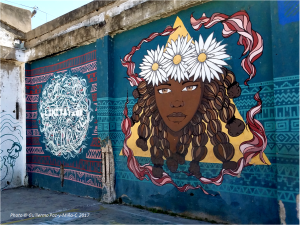
Above: The works and message of Paint Jamaica.

Above: The works and message of Paint Jamaica.
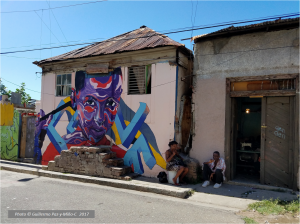
Above: The works and message of Paint Jamaica.
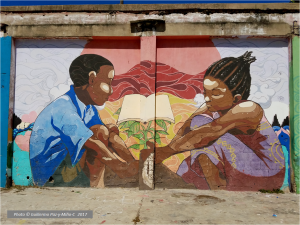
Above: Boy, Girl and a Book… a possibility. Street mural in Kingston.
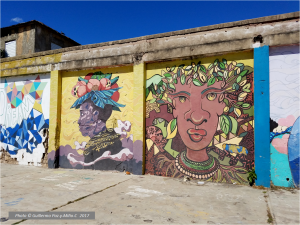
Above: Women. The works and message of Paint Jamaica.
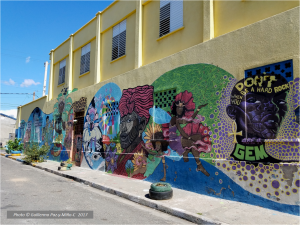
Above: Inside, a school. We could hear the children cheering and singing. Outside, the most majestic street art. Murals depicting everyday Jamaican life. Powerful. Impressive. The works and message of Paint Jamaica.

Above: “Logic will get you from A-Z, creativity will get you everywhere.” – At first, we knew artistic expression was evident in the murals. At the end of our visit we realized a world class museum of art, expression and social message had been standing before us, in the streets of a gentle neighborhood. The best of Jamaica: its people. The works and message of Paint Jamaica.

Above: Pause at Port Antonio.
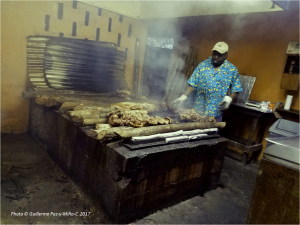
Above: The famous Jamaican Jerk, pork. Smoking is done with sweet-wood-tree wood (Nectandra cf. antillana; there are several species in the genus Nectandra).
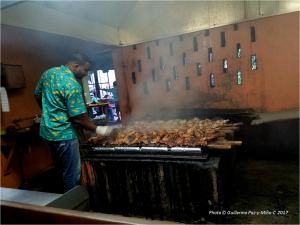
Above: The famous Jamaican Jerk, chicken.
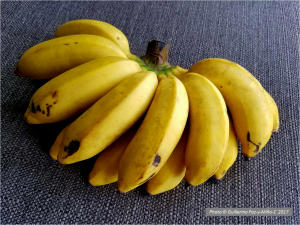
Above: Baby Jamaican bananas, about 3 inches in size. Sweet.
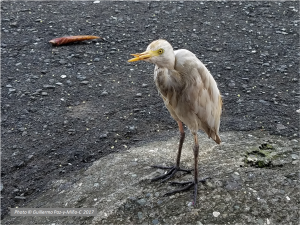
Above: Egret comes to my camera.

Above: Exploring the Green Grotto Caves.

Above: Exploring the Green Grotto Caves.
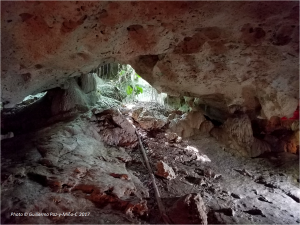
Above: Collapsed entrance to the Green Grotto Caves.
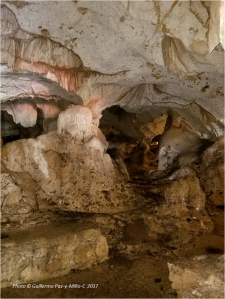
Above: Top and base of the Green Grotto Caves.
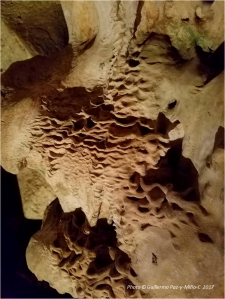
Above: Some parts of this cave are still alive and growing. Exploring the Green Grotto Caves.
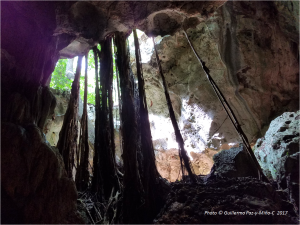
Above: Another entrance (among many) to the impressive Green Grotto Caves.
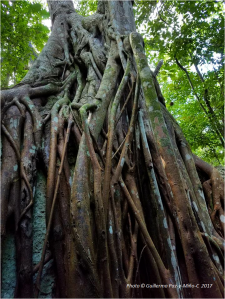
Above: Searching roots of the Ficus tree-liana-epiphyte at one of the entrances to the Green Grotto Caves.
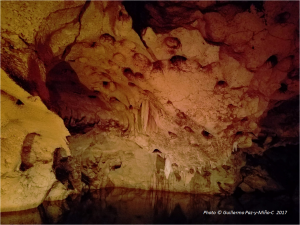
Above: Inner pond (‘lake’) at the Green Grotto Caves.

Above: Mummified bat inside the Green Grotto Caves. – The bat probably died while perching (hanging on its claws) and its body mummified in place. Caves are cool, often dry and keep stable temperature. – I could not capture a better image, it was quite dark (I used a flashlight for illumination).

Above: Perhaps in the 1950s, the highway A1 (Northern Coastal Hwy) was memorable (we drove through it almost daily). Monarchies must vanish… long ago overdue. We look forward to seeing Jamaica as a Republic in the future. Currently, Jamaica is a “parliamentary democracy” and a “constitutional monarchy.” In other words, it continues to be part of the British Crown.

Above: Queen Conches, threatened in some areas of the Caribbean due to over collection. Edible. Each conch $50-60 US (see 23 on display). Nearby Lucea, ironically on the A1 road (the “Queen Elizabeth II” road, see previous image), Northwest of the island.
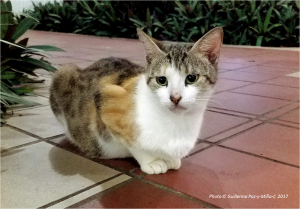
Above: Feral cat that happens to live nearby humans. We saw hundreds in Jamaica. – Islands all over the world have a similar problem (e.g. Hawaii, Galapagos, Sicily). Feral cats feed on the local fauna and are responsible for decimating endemic species. – This female became a bit more tolerant of my camera as I approached her slowly and during several minutes. Her attention was on a toad hiding in the bushes.
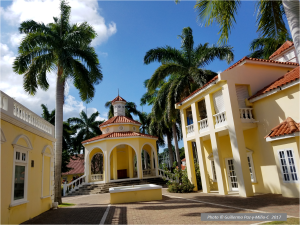
Above: Modern architecture in Jamaica. Common in shopping malls, close to large resorts.

Above: More of modern Jamaican architecture.

Above: A close up of modern Jamaican architecture.

Above: Basic Medical Science Complex of the University of the West Indies, Mona Campus.
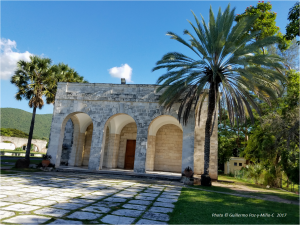
Above: The Chapel (front view) at the University of the West Indies, Mona Campus.
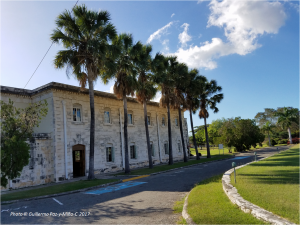
Above: The Chapel (side view) at the University of the West Indies, Mona Campus.
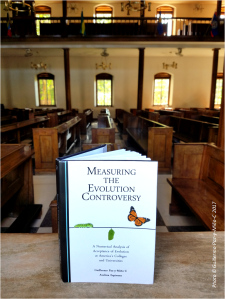
Above: Our 2016 book, Measuring the Evolution Controversy, visiting the Chapel at the University of the West Indies, Mona Campus.

Above: The beautiful indoors of the Chapel at the University of the West Indies, Mona Campus.

Above: The Papine Village Monument at the University of the West Indies, Mona Campus.

Above: Enslaved Females’ Names (1832) — the Papine Village Monument in what today is the University of the West Indies, Mona Campus.
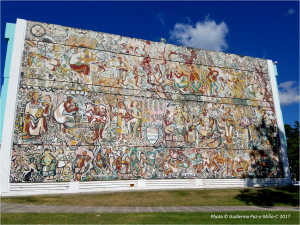
Above: Mural at the Assembly Hall, University of the West Indies, Mona Campus.

Above: Old aqueduct (18th Century) at the University of the West Indies, Mona Campus.
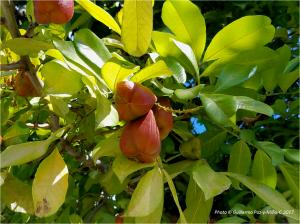
Above: Blighia tree at the University of the West Indies, Mona Campus. Jamaica’s national fruit.

Above: Blighia, with the capsule open at the University of the West Indies, Mona Campus.

Above: The University of the West Indies Open Campus in Port Antonio.
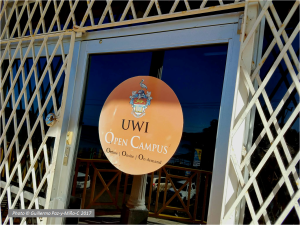
Above: The University of the West Indies Open Campus in Port Antonio.

Above: The University of the West Indies Open Campus in Port Antonio.

Above: An example of think globally, act locally.

Above: An example of think globally, act locally.

Above: Trifolia old fountain at the Castleton Botanic Gardens.

Above: At the Toms River, Castleton Botanic Gardens.

Above: Color at the Castleton Botanic Gardens.

Above: The Alexander Bustamante Memorial at the National Heroes Park, Kingston.

Above: Change of Guard at the National Heroes Park, Kingston.
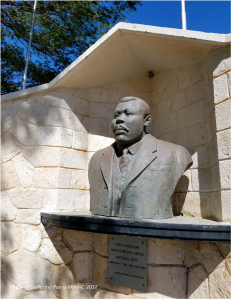
Above: The Marcus Mosiah Garvey Memorial at the National Heroes Park, Kingston.
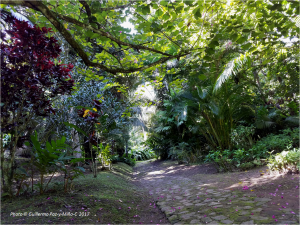
Above: A path to be taken at the Castleton Botanic Gardens.

Above: More of the colors at the Castleton Botanic Gardens.
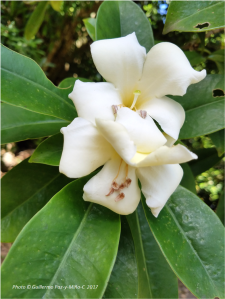
Above: The absence of color, or presence of the rainbow colors combined (white), at the Castleton Botanic Gardens.

Above: Penta-meros at the Castleton Botanic Gardens.

Above: The name is Fleming, Ian Fleming. One of the few memories of Fleming in Jamaica. Author of the James Bond series and former British naval intelligence agent. He retired in Oracabessa, Northeast part of Jamaica. From his home, he wrote the James Bond novels. – The Ian Fleming International Airport is located near Oracabessa.

Above: Ian Fleming as my camera found him being remembered (poster) at the mini Ian-Fleming International Airport in Oracabessa. This is what the airport website says about Fleming.
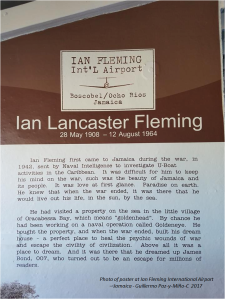
Above: About Ian Fleming, as my camera found him being remembered on a poster at the mini Ian-Fleming International Airport in Oracabessa. This is what the airport website says about Fleming.

Above: Celebrating the writer at the Ian-Fleming International Airport in Oracabessa.

Above: Norman Washington Manley Memorial in Kingston.
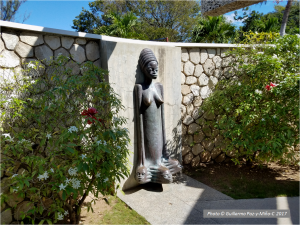
Above: Female at the Norman Washington Manley Memorial in Kingston.
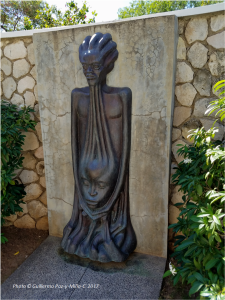
Above: Male at the Norman Washington Manley Memorial in Kingston.

Above: Monument to Paul Bogle in Kingston. The struggles to free a nation.

Above: Nearby Orange Bay, Northeast part of the island.

Above: After a rainy and windy morning, the day cleared up, gazebo in Port Antonio.

Above: Town at dusk, Ocho Rios. Our last evening… silence.

Above: Our last aerial view of Jamaica (Northeast of the island).
Concluding Remark. The future of Jamaica belongs to its people. Despite the socio-economic struggles, the Jamaican spirit is strong and festive. Optimism is contagious and always present. The new generation shall build a Republic on the legacy of its ancestry and the challenges of modern times. One day, I shall return to this scenic Caribbean island and reflect again on its magic, walk its towns, talk to its people, and feel once more the affection of their character. — GPC EvoLiteracy © 2017
You can contact Guillermo Paz-y-Miño-C via email at guillermo.pazyminoc@gmail.com — Follow us on Twitter @gpazymino and Facebook.
* * * * * * * * * * * * * * *
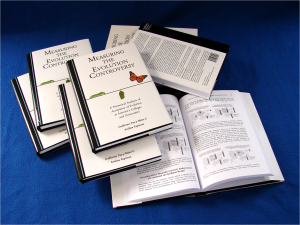
Paz-y-Miño-C, G & Espinosa, A. 2016. Measuring the Evolution Controversy: A Numerical Analysis of Acceptance of Evolution at America’s Colleges and Universities. Cambridge Scholars Publishing, Newcastle, United Kingdom. ISBN (10): 1-4438-9042-1, ISBN (13): 978-1-4438-9042-7.
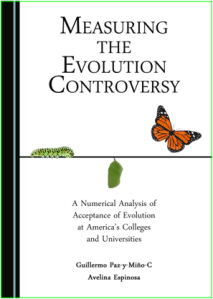 Measuring the Evolution Controversy can be ordered directly from Cambridge Scholars Publishing, Amazon US, or Amazon CA . The publisher has made available a “VIEW EXTRACT” (in PDF), which includes the first 30-pages of the book: Cover, Table of Contents, Acknowledgments, Preface, Chapter ONE and the beginning of Chapter TWO. For PDF of color illustrations go to Image Resources of Didactic Relevance.
Measuring the Evolution Controversy can be ordered directly from Cambridge Scholars Publishing, Amazon US, or Amazon CA . The publisher has made available a “VIEW EXTRACT” (in PDF), which includes the first 30-pages of the book: Cover, Table of Contents, Acknowledgments, Preface, Chapter ONE and the beginning of Chapter TWO. For PDF of color illustrations go to Image Resources of Didactic Relevance.
“The great contribution of ‘Measuring the Evolution Controversy’ is the rich content of data and analysis that asks detailed questions about the social, economic and political backgrounds of those who tend to reject evolution vs. those who accept evolution as science. Paz-y-Miño-C and Espinosa deftly analyze their data drawn from institutions of higher learning in the United States and particularly New England —which stands as a microcosm of the rest of the country, and indeed elsewhere in the world. It is their scientific approach to these issues which makes this book stand out as a uniquely original contribution.” — Niles Eldredge, PhD, Curator Emeritus of Paleontology at The American Museum of Natural History, New York.
“Pro-science activists and educators constantly bemoan the resistance to the teaching of evolution in the United States. All of us have anecdotes about encounters with the public, parents and students who are misinformed by their churches, Religious-Right groups, and creationist organizations. Paz-y-Miño-C and Espinosa present hard data that support the anecdotal evidence. They also show that although anti-evolutionism typically begins with religion, it is a multi-faceted problem that intersects with political and cultural ideologies. Gathered through careful research over a period of years, their data will enable scientists and defenders of science education to comprehend the roots of the evolution controversy and counteract resistance to evolution more strategically and effectively.” — Barbara Forrest, PhD, co-author with Paul R. Gross of Creationism’s Trojan Horse: The Wedge of Intelligent Design (2007), and expert witness for plaintiffs, Kitzmiller et al. v. Dover Area School District (2005).
* * * * * * * * * * * * * * *
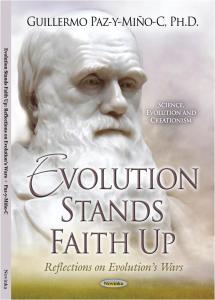 Paz-y-Miño-C., G. 2013. Evolution Stands Faith Up: Reflections on Evolution’s Wars. NOVA Publishers, New York. By NOVA Publishers, New York Soft Cover. Find it at Barnes & Noble, Amazon.com, Amazon UK
Paz-y-Miño-C., G. 2013. Evolution Stands Faith Up: Reflections on Evolution’s Wars. NOVA Publishers, New York. By NOVA Publishers, New York Soft Cover. Find it at Barnes & Noble, Amazon.com, Amazon UK
“The sweet spot of this collection of essays is the interface of science, history and literacy. Paz-y-Miño-C is, in essence, a champion of rationalism and a passionate defender of literacy standards. His essays deftly weave hard survey data and memorable turns of phrase with evocative imagery… While the essays in this collection are vast in coverage —from climate change to energy policy, stem cell research, vaccinations and, especially, evolution— a clear underlying theme emerges: [the author’s] goal is no less than to counter, through the lens of history and the majesty of rationalism, social forces that sanction ignorance, celebrate denial and… continue to diminish our global status in the fields of science and technology.” Jeff Podos, PhD, Professor of Biology, University of Massachusetts Amherst, USA.
“Paz-y-Miño-C is a firm believer in evolutionary processes. He would like to see decisions made on the basis of facts, not unsupported opinion. He abhors and fears irrational thinking, especially ‘the views of those who see evil in truth and menace in the realities discovered by science.’ He marvels at the intricacy and diversity of life, and how it came about through natural selection… and is clearly frustrated by the unwillingness of so many to see the beauty and majesty in this view of the world and all that it explains.” – Jan A. Pechenik, PhD, Professor of Biology, Tufts University, USA, author of The Readable Darwin: The Origin of Species, as Edited for Modern Readers.






































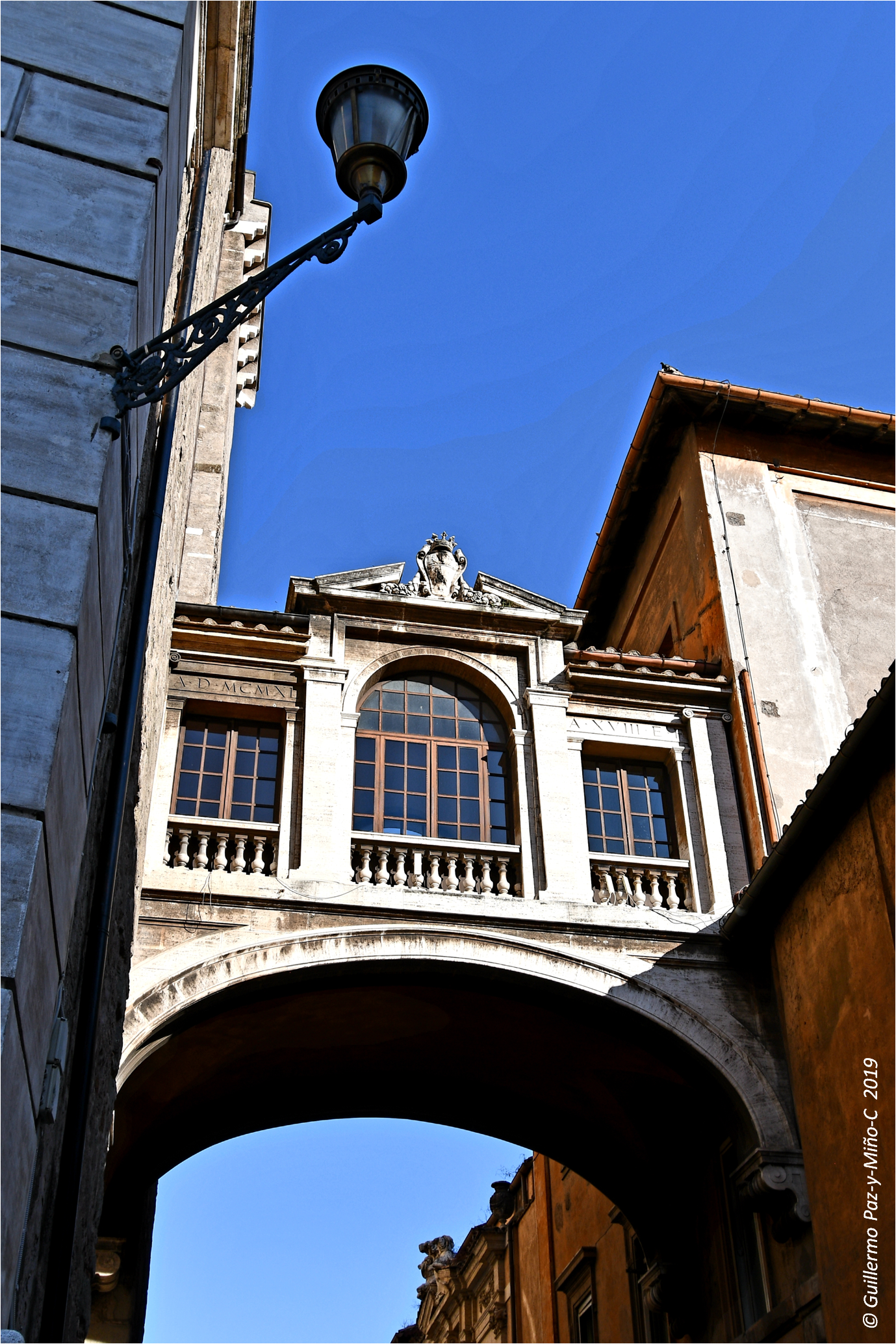









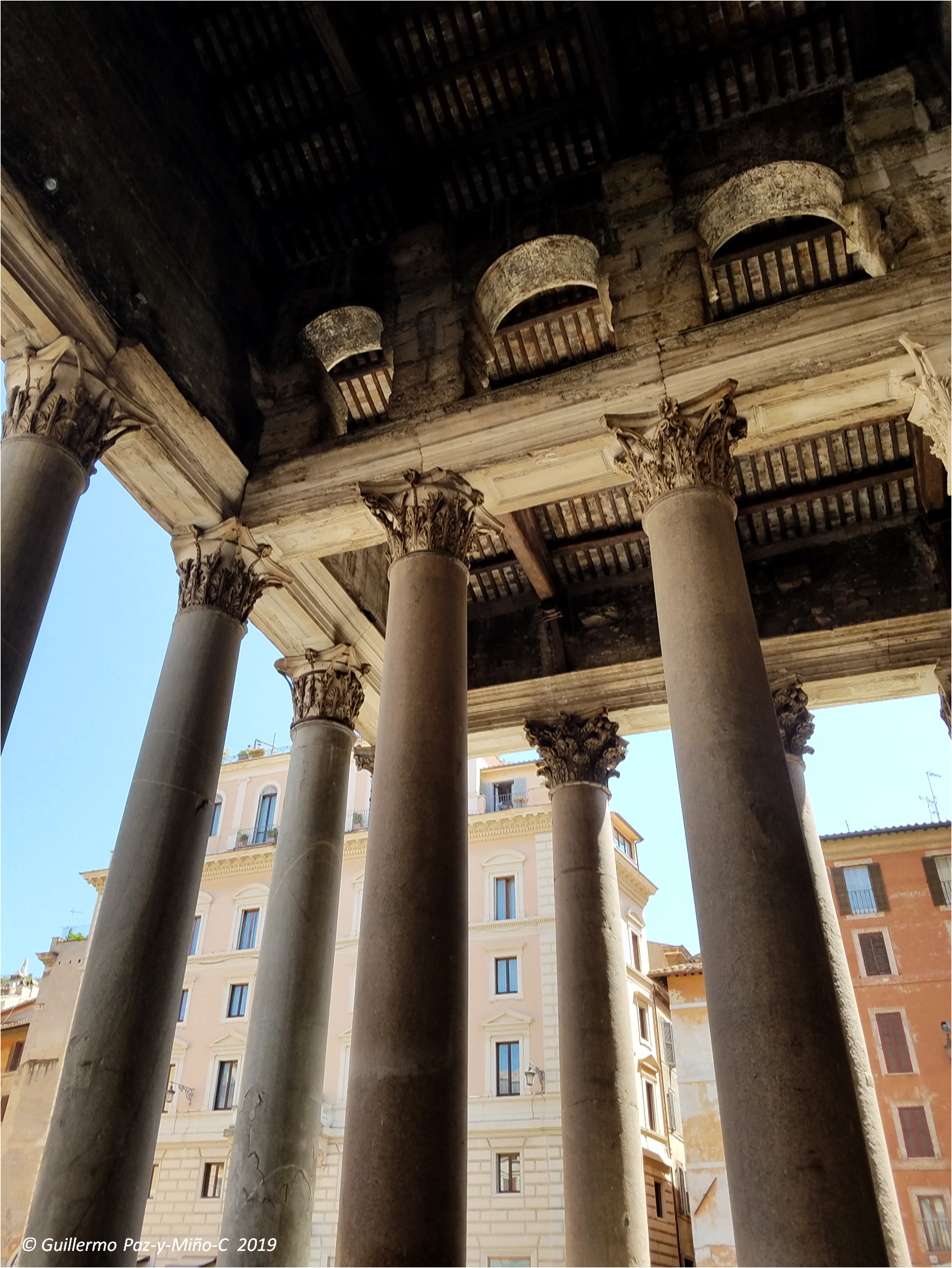



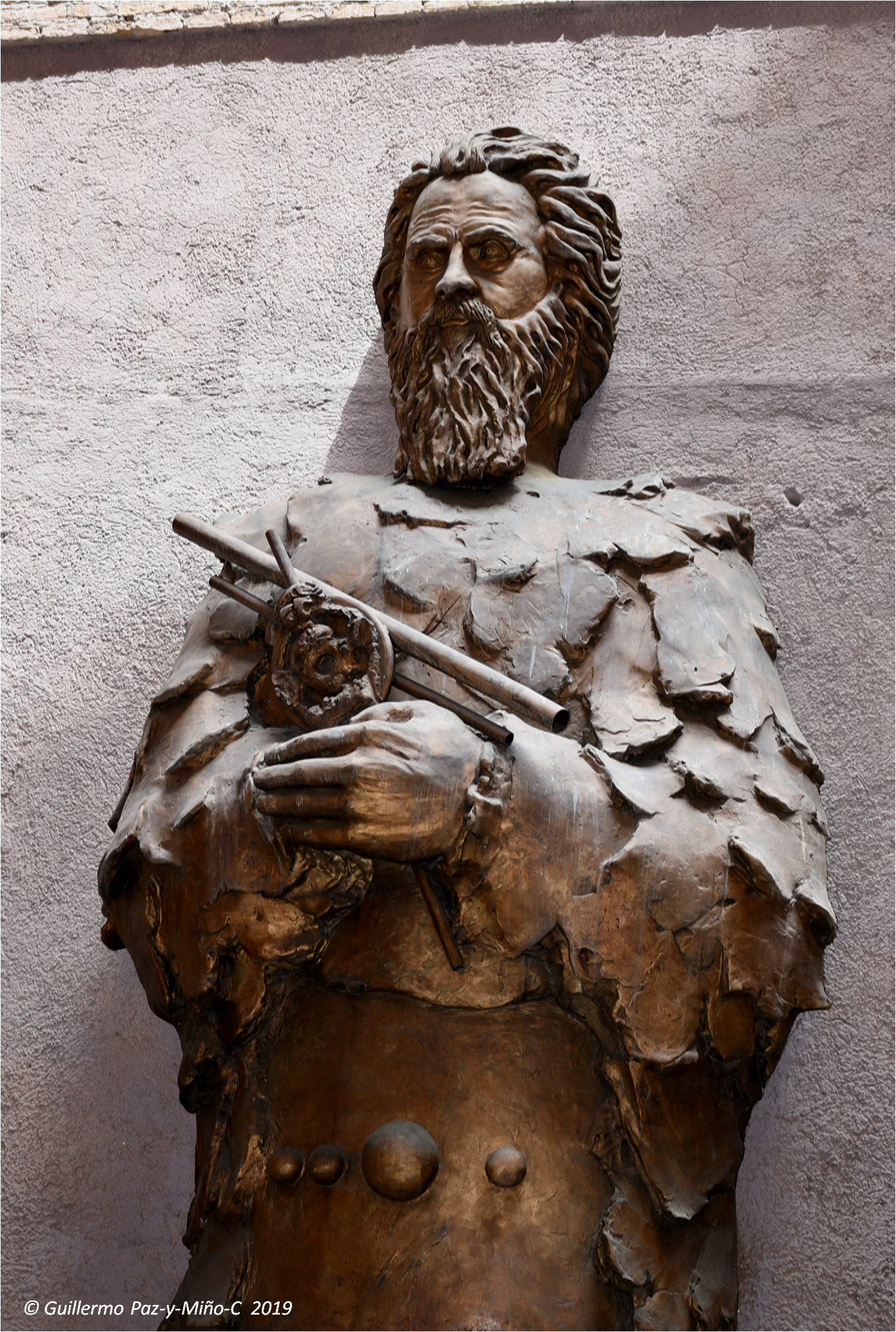












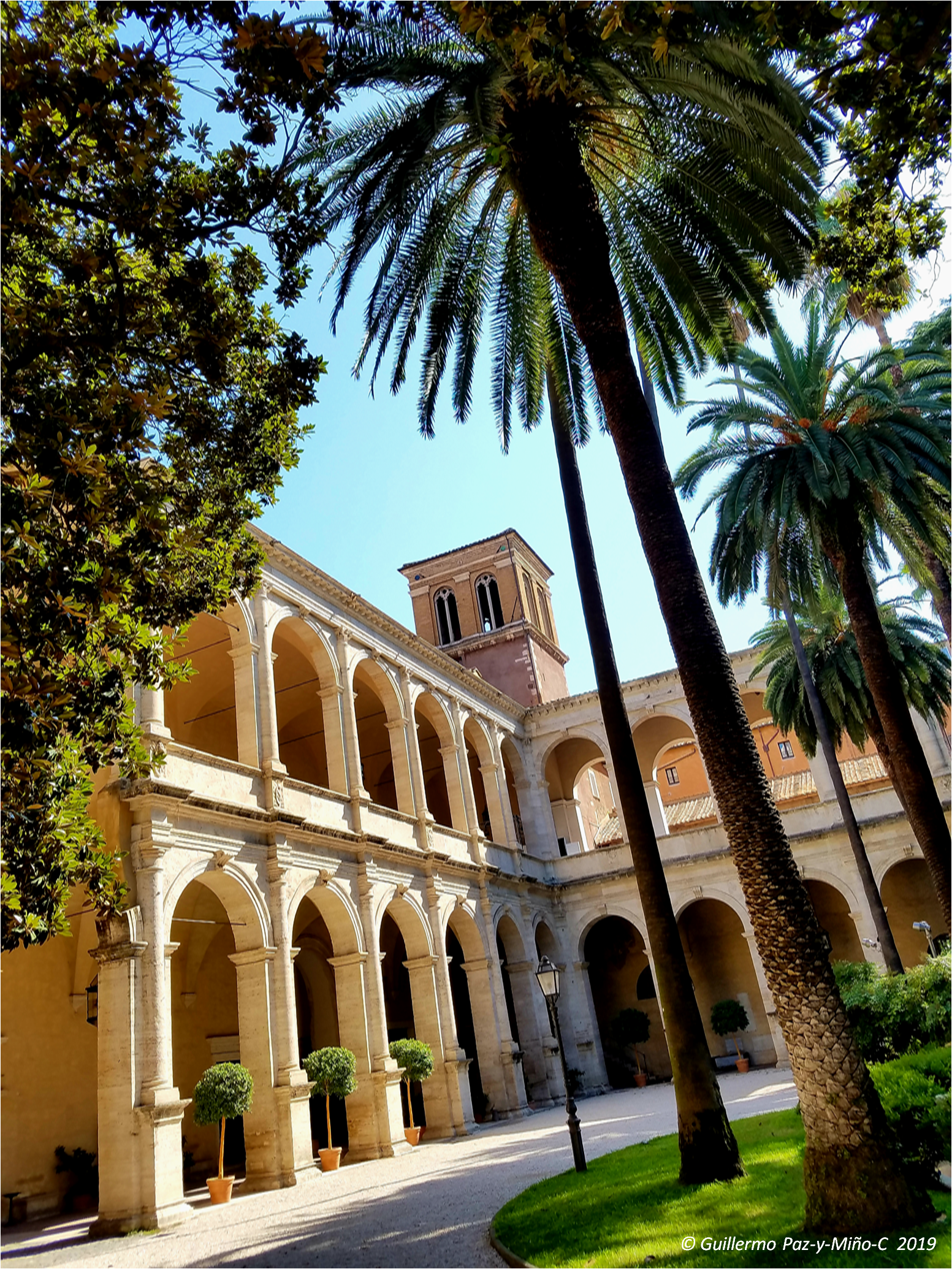
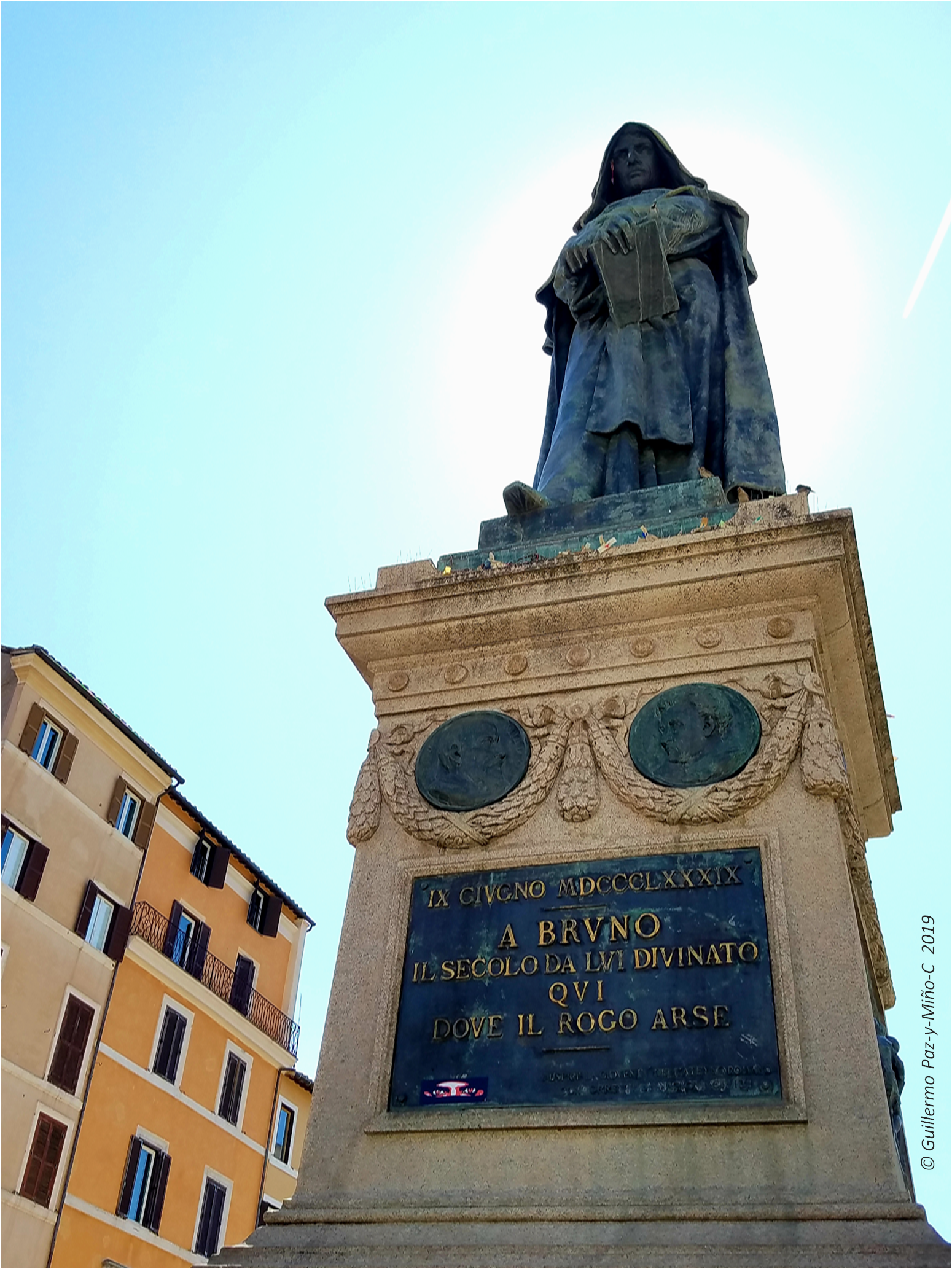











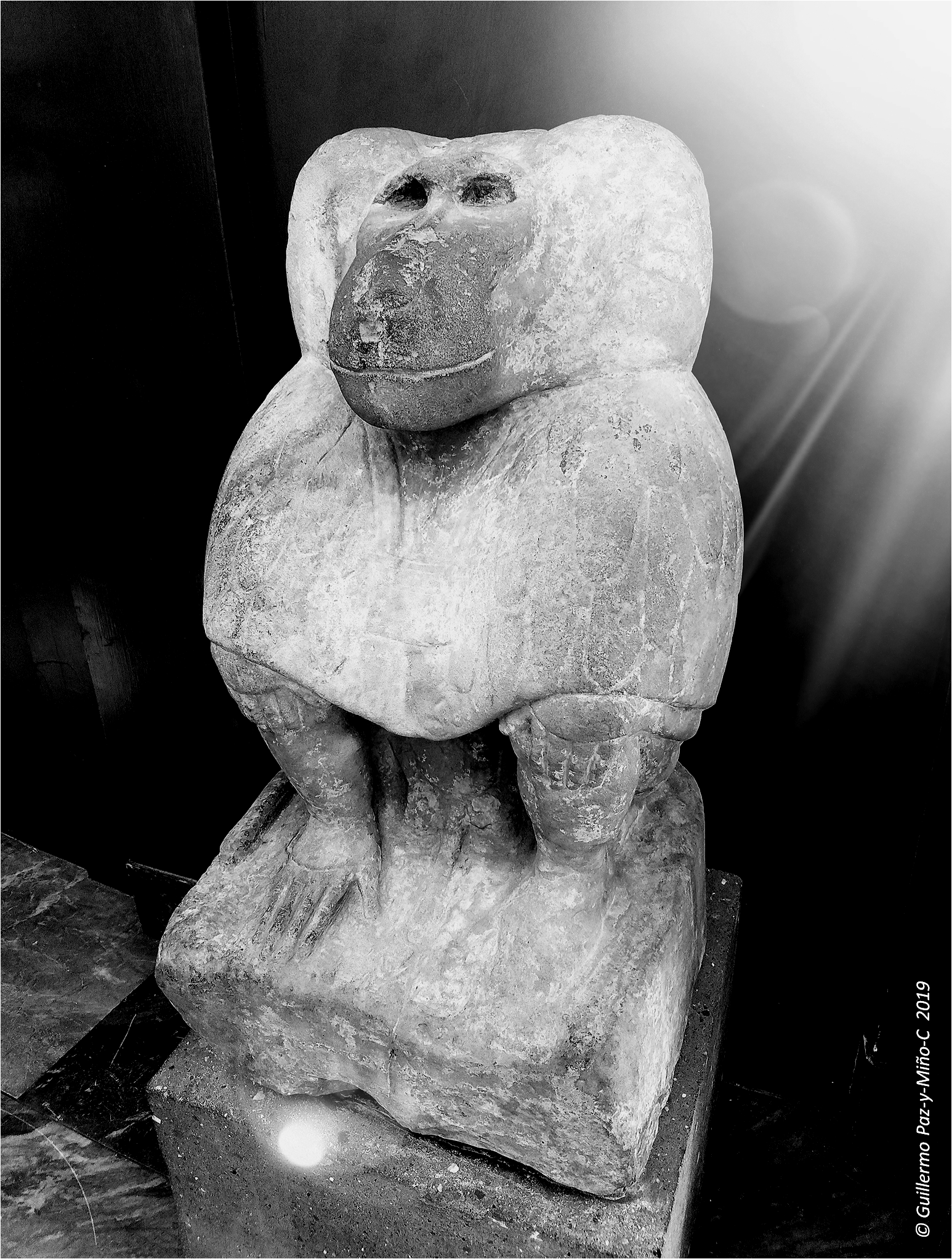

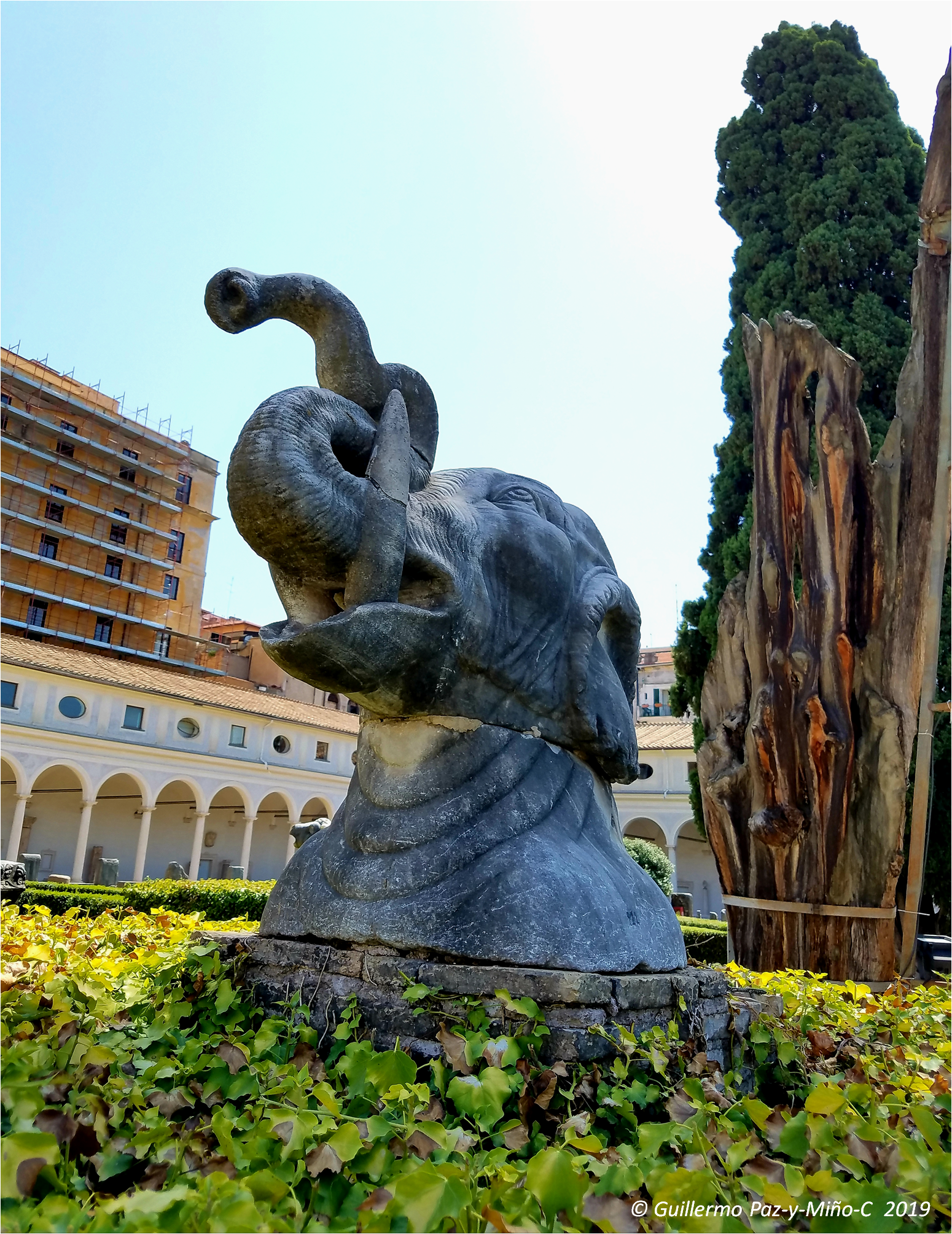











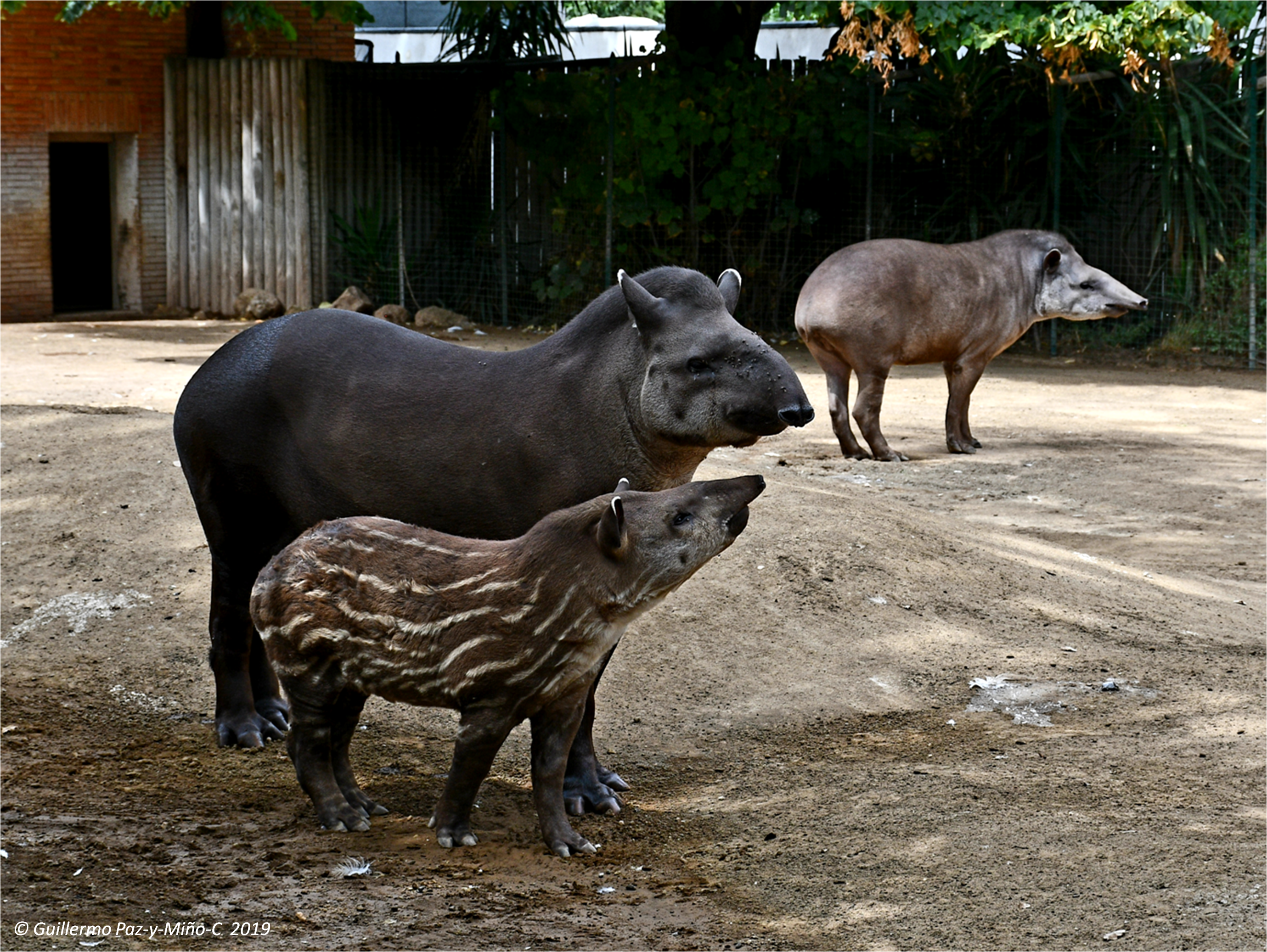




















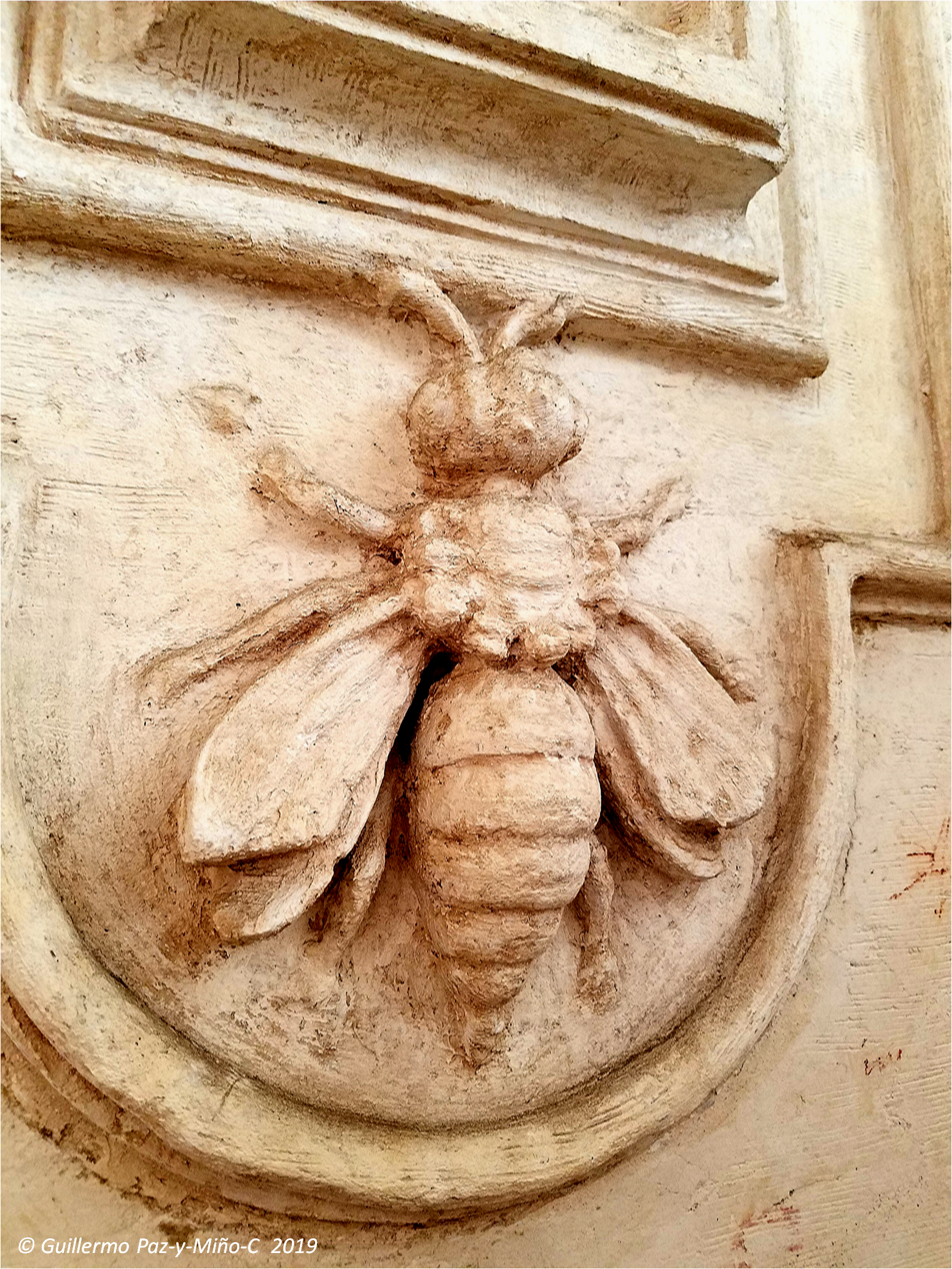



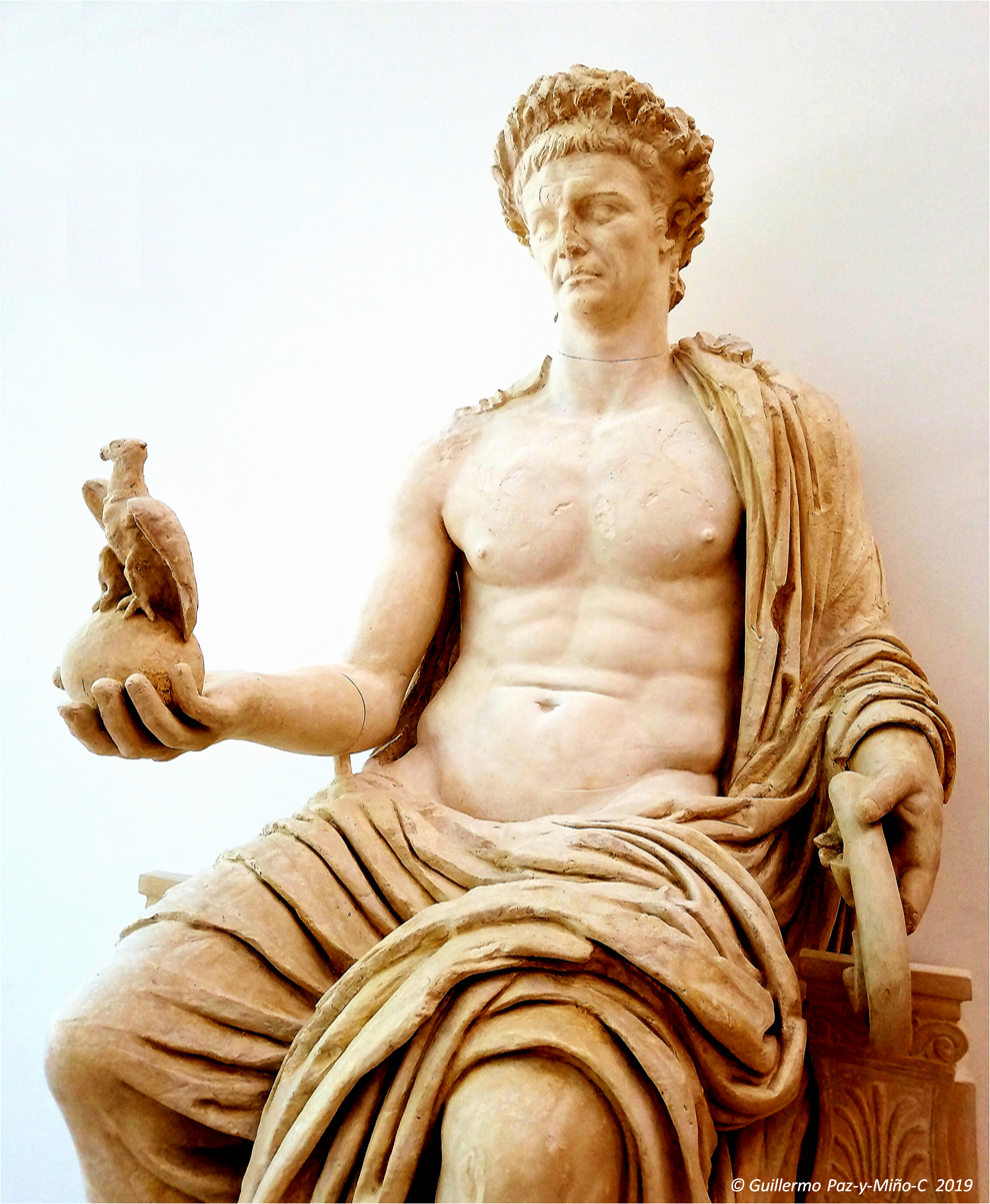








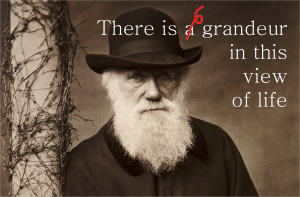


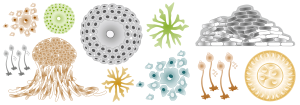
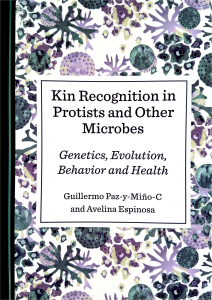









































































































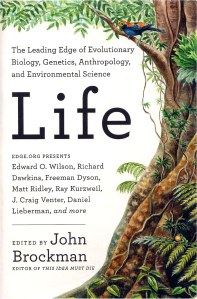
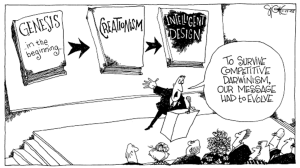
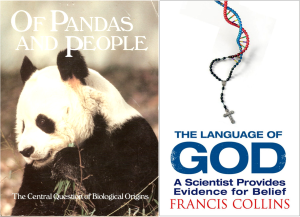
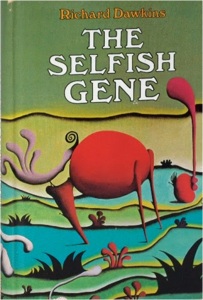



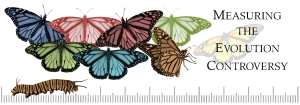
You must be logged in to post a comment.